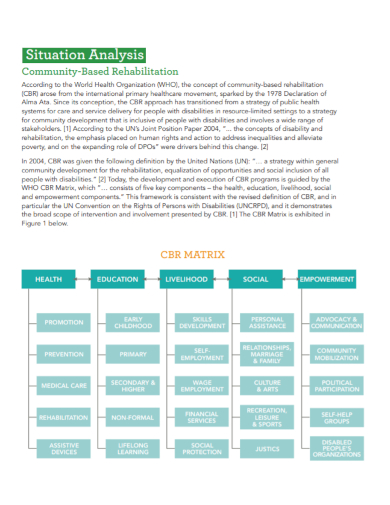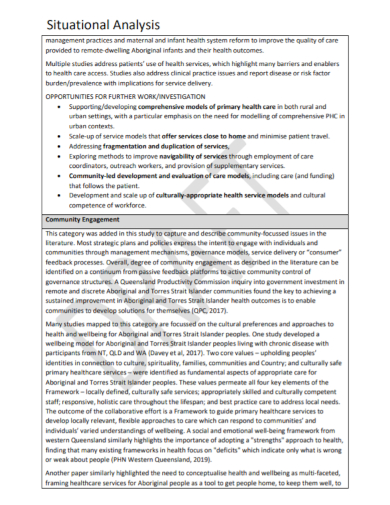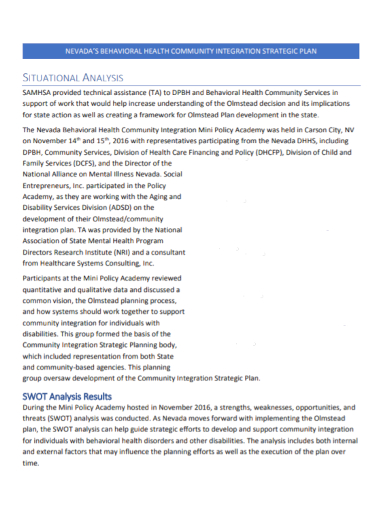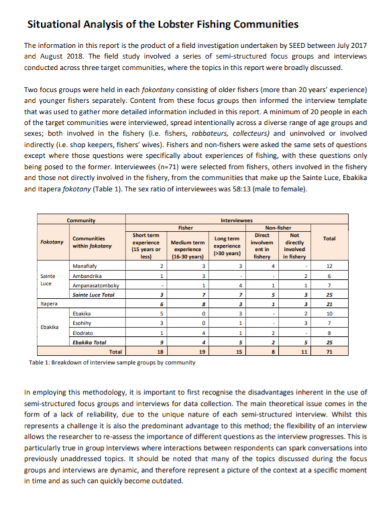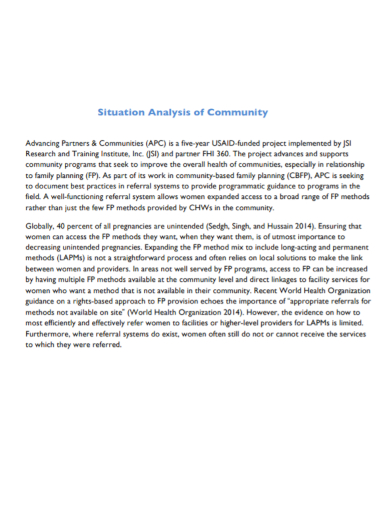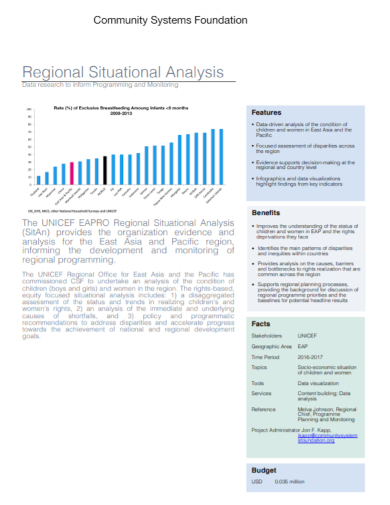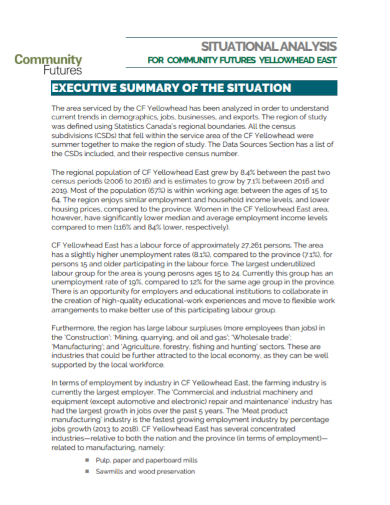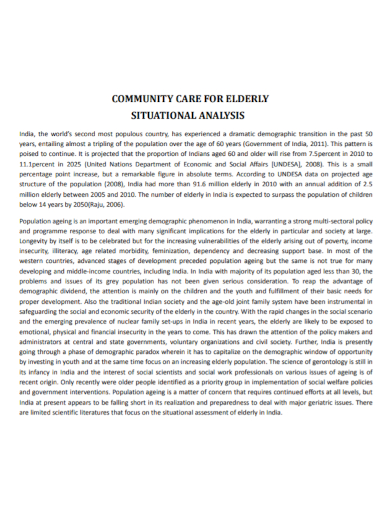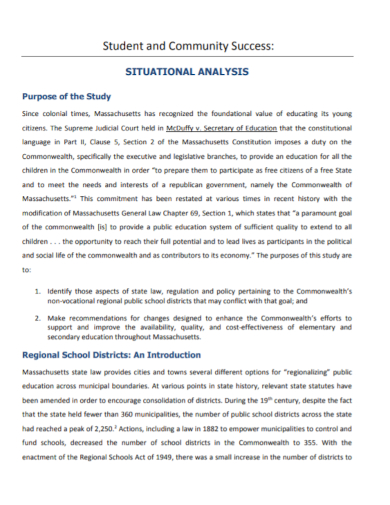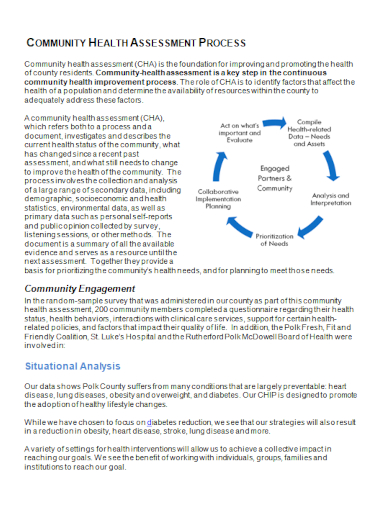Have you encountered conducting a situational analysis before? If so, what did you do in order to successfully conduct it? If you haven’t tried yet, this is a great avenue for you to know more about it. Let us define first what a situational analysis is all about. A situational analysis is something that enables you to develop an understanding based on the environment in which a certain plan is delivered. It gives you a common reference point which will be used for planning and action. The analysis itself emphasizes the presence of the risks and benefits to a specific project to which a particular organization is involved implementing a good communication process. It is sometimes incorporated with the SWOT analysis that helps in examining the results of the project.
Having so many problems to solve but limited resources and time, we definitely need an accurate assessment of the needs in a community. Identifying their needs is a halfway journey towards the development of a program planning process. The resources, both physical and social, must be determined to help you find the best methods and tools that is being required to solve a particular issue. Along with the assessment, an evaluation must come after. It includes aspects such as physical, social, legal, and even in religious matters. Take note that a project will not be implemented as planned if there are no available resources or if there is still a need to require an investment of scarce resources.
9+ Community Situational Analysis Samples
1. Community Rehabilitation Situational Analysis
2. Community Engagement Situational Analysis
3. Community Strategic Situational Analysis
4. Fishing Community Situational Analysis
5. Community Situational Analysis
6. Community System Situational Analysis
7. Community Executive Situational Analysis
8. Community Care Situational Analysis
9. Student Community Situational Analysis
10. Community Health Situational Analysis
How to Conduct a Community Situational Analysis
- It is very essential to understand the context of your community. This will help you get an idea on what type of project you want to implement or the type of problem you want to solve. You should consider the population profile, education profile, economic profile, environmental profile, political profile, and cultural profile of the community.
- You should be able to identify the challenges in the community. You may want to consult local communities by conducting workshops, interviews, or survey just to make sure that you get all the necessary information including the problems that will come from their own perspective. Take note that you have to think holistically. Your goal is to determine the problem that the community faces.
- Try to assess the capacity of the organization – this will help you identify what opportunity is best for your organization in order to help. This will provide you with an assistance in maximizing the effectiveness of your work. You have to include the following aspects in the assessment: qualifications and experiences of your staff, existing relationship with the community from previous projects, and obstacles and insufficiencies. The main goal of this process is to identify the strengths and weaknesses of the organization. You can use a SWOT analysis as it is proven helpful when completing this process.
- It’s time for you to select a broad problem which you think is suited to be addressed. Choose the project allow that will eventually let you maximize the strengths and minimize the weaknesses of your organization.
- Lastly, try to reassess the context of the problem. This is an opportunity for you to get more specific information so you can understand and come up a solid solution to address a problem.
FAQs
Why is a SWOT analysis useful in conducting a community situational analysis?
It helps in identifying the type of project that is best for the organization in analyzing the internal capacities and external environment.
What are the general principles used to avoid having an incomplete data collection?
Take sufficient time, use participatory approach, select community representatives carefully, use key indicators, and use an iterative and continuing approach.
What are the methods in rapid rural appraisal that is part of the essential process of a community situational analysis?
It includes guided interview, direct observation, informal transects, local researchers, local experts, reading and collecting information, meetings, brainstorming techniques, etc.
If you want to see more samples and format, check out some community situational analysis samples and templates provided in the article for your reference.
Related Posts
FREE 11+ Health Care SWOT Analysis Samples
FREE 10+ Health Problem Statement Samples
FREE 10+ Sample Social Worker Job Description
FREE 10+ Leadership Assessment Samples
FREE 10+ School Survey Report Samples
FREE 10+ Research Analysis Samples
FREE 9+ Health Assessment Samples
FREE 7+ Social Work Assessment Forms
FREE 10+ Business Recommendation Report Samples
FREE 10+ Student Assessment Reports Samples
FREE 10+ Vulnerability Assessment Samples
FREE 9+ Sample Need Assessment
FREE 8+ Target Market Analysis Samples
FREE 7+ Sample Skills Assessment
FREE 7+ Force Field Analysis Templates

